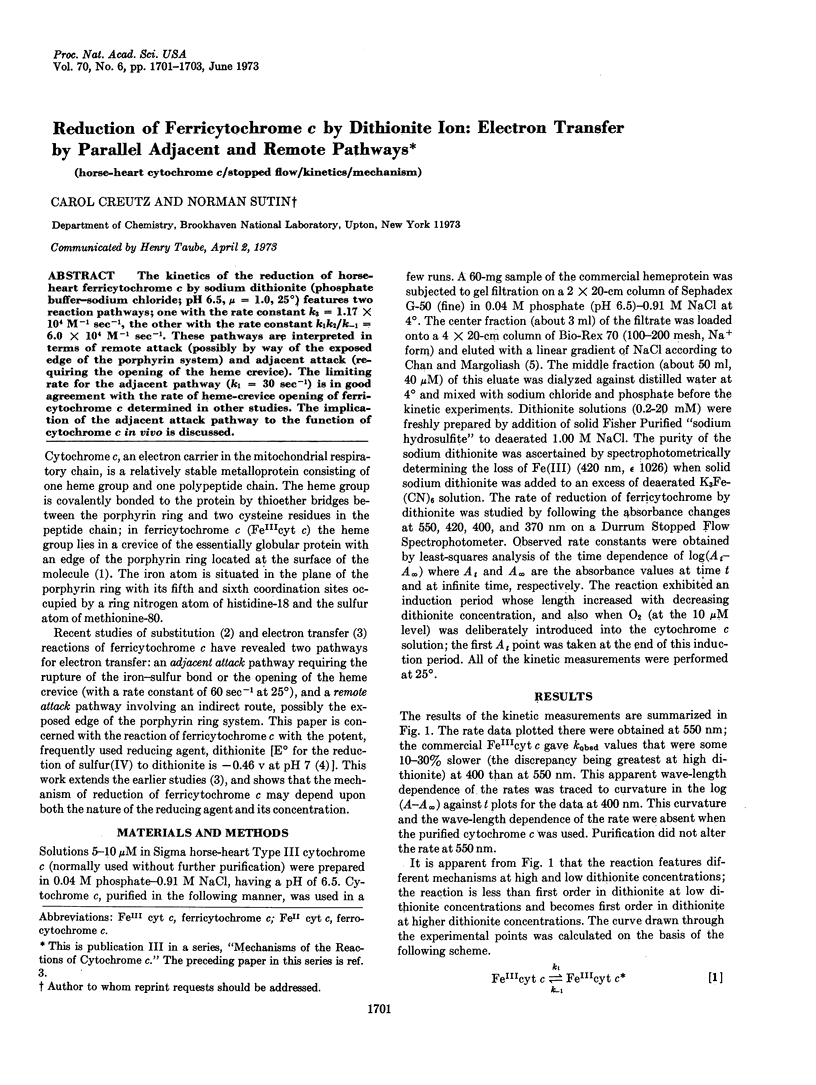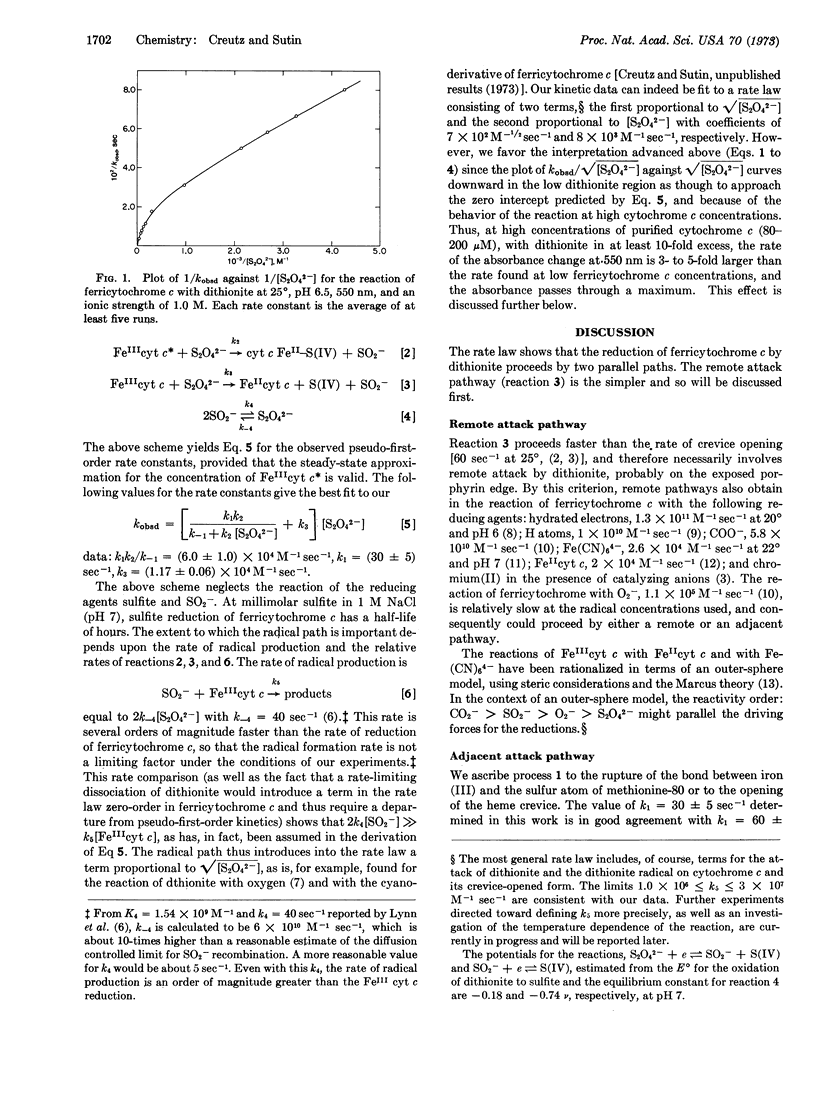Abstract
The kinetics of the reduction of horseheart ferricytochrome c by sodium dithionite (phosphate buffer-sodium chloride; pH 6.5, μ = 1.0, 25°) features two reaction pathways; one with the rate constant k3 = 1.17 × 104 M-1 sec-1, the other with the rate constant k1k2/k-1 = 6.0 × 104 M-1 sec-1. These pathways are interpreted in terms of remote attack (possibly by way of the exposed edge of the porphyrin system) and adjacent attack (requiring the opening of the heme crevice). The limiting rate for the adjacent pathway (k1 = 30 sec-1) is in good agreement with the rate of heme-crevice opening of ferricytochrome c determined in other studies. The implication of the adjacent attack pathway to the function of cytochrome c in vivo is discussed.
Keywords: horse-heart cytochrome c, stopped flow, kinetics, mechanism
Full text
PDF


Selected References
These references are in PubMed. This may not be the complete list of references from this article.
- Brandt K. G., Parks P. C., Czerlinski G. H., Hess G. P. On the elucidation of the pH dependence of the oxidation-reduction potential of cytochrome c at alkaline pH. J Biol Chem. 1966 Sep 25;241(18):4180–4185. [PubMed] [Google Scholar]
- CHANCE B. Spectra and reaction kinetics of respiratory pigments of homogenized and intact cells. Nature. 1952 Feb 9;169(4293):215–221. doi: 10.1038/169215a0. [DOI] [PubMed] [Google Scholar]
- Chan S. K., Margoliash E. Properties and primary structure of the cytochrome c from the flight muscles of the moth, Samia cynthia. J Biol Chem. 1966 Jan 25;241(2):335–348. [PubMed] [Google Scholar]
- Dickerson R. E., Takano T., Eisenberg D., Kallai O. B., Samson L., Cooper A., Margoliash E. Ferricytochrome c. I. General features of the horse and bonito proteins at 2.8 A resolution. J Biol Chem. 1971 Mar 10;246(5):1511–1535. [PubMed] [Google Scholar]
- GEORGE P., SCHEJTER A. THE REACTIVITY OF FERROCYTOCHROME C WITH IRON-BINDING LIGANDS. J Biol Chem. 1964 May;239:1504–1508. [PubMed] [Google Scholar]
- Land E. J., Swallow A. J. One-electron reactions in biochemical systems as studied by pulse radiolysis. V. Cytochrome c. Arch Biochem Biophys. 1971 Jul;145(1):365–372. doi: 10.1016/0003-9861(71)90049-x. [DOI] [PubMed] [Google Scholar]
- Pecht I., Faraggi M. Electron transfer to ferricytochrome c: reaction with hydrated electrons and conformational transitions involved. Proc Natl Acad Sci U S A. 1972 Apr;69(4):902–906. doi: 10.1073/pnas.69.4.902. [DOI] [PMC free article] [PubMed] [Google Scholar]
- Schejter A., Aviram I. The reaction of cytochrome c with imidazole. Biochemistry. 1969 Jan;8(1):149–153. doi: 10.1021/bi00829a021. [DOI] [PubMed] [Google Scholar]
- Sutin N., Yandell J. K. Mechanisms of the reactions of cytochrome c. Rate and equilibrium constants for ligand binding to horse heart ferricytochrome c. J Biol Chem. 1972 Nov 10;247(21):6932–6936. [PubMed] [Google Scholar]
- Wagner M., Erecińska M., Pring M. Theoretical and experimental studies of the electron transfer reactions in the cytochrome chain. II. Fitting of the experimental data. Arch Biochem Biophys. 1971 Dec;147(2):675–682. doi: 10.1016/0003-9861(71)90427-9. [DOI] [PubMed] [Google Scholar]
- Yandell J. K., Fay D. P., Sutin N. Mechanisms of the reactions of cytochrome c. II. The rate of reduction of horse-heart ferricytochrome c by chromium(II). J Am Chem Soc. 1973 Feb 21;95(4):1131–1137. doi: 10.1021/ja00785a022. [DOI] [PubMed] [Google Scholar]


